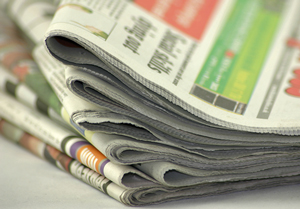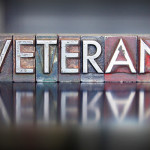
Should You Kindle Your Newspaper?
This post may contain affiliate links or Google Ads and we may earn a small commission when you click on the links at no additional cost to you. As an Amazon Affiliate, we earn from qualifying purchases. This is at no additional cost to you and helps with our website expenses.
Did you know that you can download the Las Vegas Review-Journal and read it on your Kindle? You can also download the Los Angeles Times, Wall Street Journal, USA Today, and just about every other major U.S. newspaper. Prices range from $5.99/month (San Francisco Chronicle) to $19.99/month (New York Times). Many (but not all) of these same papers can be downloaded onto Barnes & Noble’s Nook e-reader as well.
Reviews for most newspapers’ Kindle editions are across the board. Readers give roughly the same amount of 5-star reviews as they do 4-,3-, and 2-star reviews. For some papers, the 1-star reviews can get a little heavy–but never enough to tip the overall reviews into the red zone.
Why Get Your Newspaper on an E-Reader?
So, why would someone opt to take their newspaper on a Kindle rather than on paper, anyway?
The first advantages lie in the delivery method (wireless or 3G wireless delivery). You don’t have to worry that the delivery person will throw your paper in the wrong yard by accident, or that your paper might get rained on twice a year. And if you’re traveling on business, or for any other reason, you can still keep up with what’s going on in your town.
Then, of course, there is the convenience of carrying around your entire daily paper on a medium that’s not much larger than an outstretched hand. You also won’t have any newspaper in your office or on the breakfast table. Best of all, nobody will ever steal your favorite section before you get to read it!
Finally, taking your newspaper via e-reader is less expensive. Sometimes substantially so (the difference in pricing seems to be decided by multiple coin tosses, in some cases). And while you may assume anyone who takes their news through an electronic gadget probably doesn’t care too much about the cost of a paper, it’s also true that pretty much everyone is watching their budget these days.
What You Don’t Get with E-Reader Newspapers
Whenever someone complains about the Kindle or Nook version of their favorite paper, it’s typically because of some things that aren’t included in the e-reader version. What are the missing items?
- Maps, charts, and graphs are typically not included in the Kindle editions of most newspapers.
- E-reader newspapers have fewer photographs, typically 1/3-2/3 fewer.
- Depending on which paper you’re reading, the Kindle or Nook version may eliminate some columns and editorial content (which is half the reason some of us read the paper in the first place!).
- No comics (which is the other half).
- No advertisements (many papers also get rid of classified ads in their e-reader editions).
- Many e-reader newspaper editions carry little or no Associated Press Content. (My guess is that this has something to do with syndication fee issues, although that is strictly speculation on my part).
- You can’t put a Kindle in the bottom of a birdcage without ruining it (make sure and tell Grandma when you get one for her this holiday!).
The Biggest Issue in the Print-vs.-Digital Showdown
You can scan the paper for what you like and what you don’t. The time it takes to glance over two opened pages of newsprint and decide what stories we want to read, is usually much shorter than the amount of time we spend looking at, say, CNN.com figuring out what to read next.
There has been a lot of talk over the past few years about how our attention spans are getting shorter as we spend more time on the Web. I know that’s true–to a certain extent.
As someone who writes for the Web, I know you have to structure short sentences and paragraphs to meet this attention span. And as someone who’s spent increasing amounts of time online over the past eighteen years, I know the very real effects that too much Web browsing can have on our attention spans.
But writing for the Web isn’t that much different than writing for newsprint. Each style requires short sentences and short paragraphs. And whether you’re writing for a newspaper or a blog, you’re always trying to capture and keep the attention of someone who has other things to read and other things to do.
Maybe–just maybe–much of the Web isn’t that much different from newspapers. In fact, I think we tolerate overly-long sentences online better than we do in newspapers. We certainly tolerate mindless and otherwise inane content online better than we do in print!
Rarely does anyone read a newspaper straight through from front to back. Most people read a newspaper the same way we read the web–we scan over it, looking for the stuff we want, getting caught by a few interest-attracting headlines along the way, leaving many articles unread or half-read, skipping around from one thing to the next.
What’s the Future of Digital Newsprint?
My own (informal) survey of the Web shows me that digital newspapers and other new media haven’t taken over just yet–at least, not when it comes to Kindle, Nook, and other e-readers. By and large, readers seem to feel that a paper’s Web version is much more complete (and easy to look at).
Does that mean that the future of the Kindle newspaper is doomed? Not necessarily. Honestly, I think e-readers have a big future in our lives when it comes to newspapers, socializing, Web browsing, and several other activities. But we haven’t reached that future just yet.
In the future, we may do more on our Kindles and Nooks than we ever thought. For the time being, you’re probably better off getting your news on pulp paper with smudgy print.




